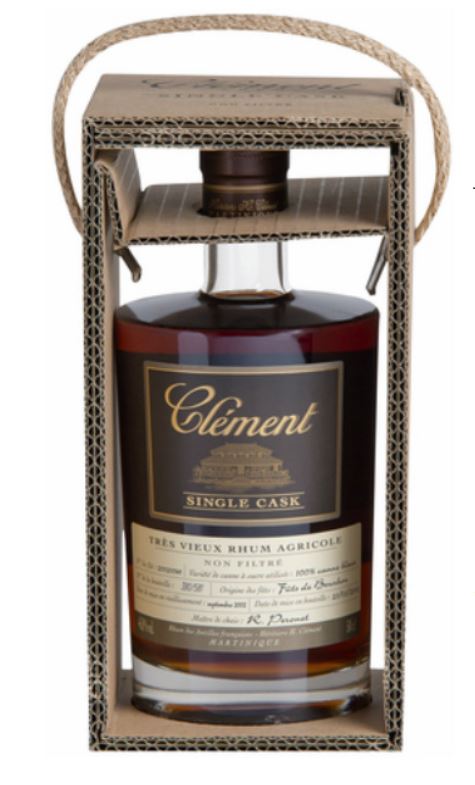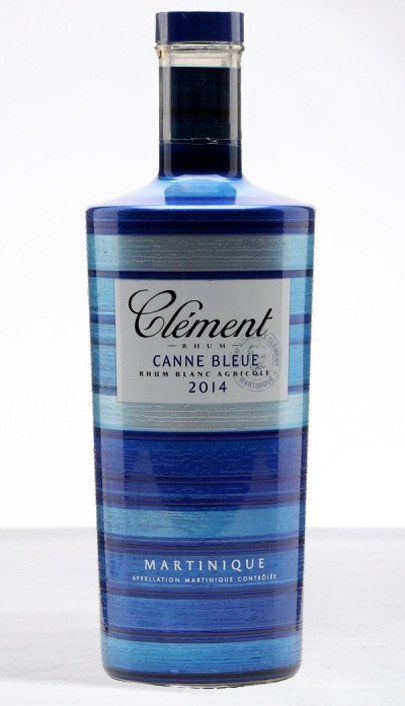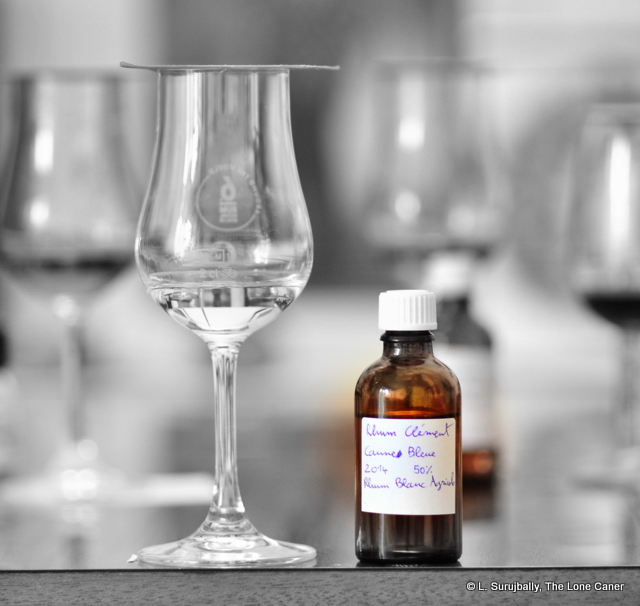The Martinique distillery Clement has, since 1989, ceased making rhum — the brand’s juice has been distilled up the road at the facilities of Distillerie Simon, and from 2017 also and increasingly from Fonds-Preville (both are owned by the Hayot Group). The original premises, however, are still used for ageing, blending and bottling Clement rhums, and they still maintain the AOC designation. Depending on who you speak to then, it supposedly has at least some terroire harkening back to what old Homere Clement made on his plantation of Domaine de l’Acajou, the progenitor of the brand.
Clement was among the first agricole rhums I ever tried, and initially their precise and fussy and clearly-defined tastes weren’t entirely to my liking; over the years, of course, I “ketch sense” and learned to appreciate them for what they were — nowadays I consider my (third) bottle of the Clement XO one of the best rhums I have to show people what an aged agricole is capable of. Over the years other Clement rhums showed their expertise: the release of the trio of 1952, 1970 and 1976 rhums, the special edition Cuvée Homère Clément Hors d’Âge, and an increasing amount of experimentals, single barrel expressions, millesimes and unaged blancs — even a canne bleue of its own.
The subject of today’s review is an ostensibly simple 9 YO expression from 2002 – a Trés Vieux Rhum Agricole, all from 100% canne bleue, aged in a single cask of ex-bourbon, 587 bottle outturn (of 50cl bottles) and a nice and firm 46.8% strength. I suppose the “cask” must have been a big one to provide that many bottles after nine years, even if they were only 500ml – I think we can assume either it was a slightly more sizeable container, rather than an American Standard Barrel 1, or the single barrel moniker is in error and it’s a blend of a couple or a few.
Whatever the ultimate provenance and barrel(s), this is a solid rhum that represents itself and its distillery very nicely indeed. It smells as fresh and bright and sparkly as bedewed sunlit grass and sheets fresh and clean from the laundry, with just a hint of citrus to the whole thing. Herbs, sugar cane sap, pears and white guavas take their turn, and It has additional notes of sweet caramel drizzled over vanilla ice cream, plus prunes, raisins, stewed apples and even a touch of coffee. An espresso of course, with a background chorus of leather, smoke and light tannins becoming evident with some water (though the rhum really doesn’t need that, honestly).
The pleasure here is in how pleasantly light it is to taste. It doesn’t sting, doesn’t bite, it’s not so heavy as to dissolve your tongue or so strong as to cause damage – it’s clean and crisp and no-nonsense, briny with olives and gherkins and some musky sweet spices (cinnamon, fenugreek, rosemary, smoky paprika, masala and even a trace of Kashmiri chilli powder, I kid you not. The same fruits as on the nose reappear to balance this all off, and there’s remarkably little sour in the way this presents: just a nice, easy, almost light crisp white wine-type sensation, culminating in a finish of berries, burnt sugar, toffee and breakfast spices. It’s completely unthreatening and completely pleasurable to drink, and never once seems like it’s straining to make the case.
Honestly, without trying to oversell the rhum, I think it’s a minor treasure: not an undiscovered steal, precisely, more a rum whose qualities seem initially subdued, and so gets somewhat overlooked, and is now mostly forgotten. It grows in the memory over time, however; it gets better and holds up well not only against other brands, but one’s own evolving palate. And each subsequent tasting expands in the appreciation a bit more until you can’t quite put your finger on it, but somehow it has become a quiet personal favourite on its own terms, and a more valued bottle in the collection than those with seemingly stronger credentials. My sample is now gone after four tries to pin down its elusive and ephemeral impact, but these notes will help me remember its unpretentious quality and the enjoyment I took from it, for a long time to come.
(#1040)(85/100) ⭐⭐⭐½
Other notes
- A second 2002 vintage bottling of 582 bottles at 41.6% and barrel #20070079 was done in September 2012 and is sometimes labelled as a 10 YO.
- If your interest has been piqued and you’re googling for this thing, I’m sorry to report that you’ll find thin pickings. Rum-X doesn’t list it, neither does Rum Ratings — even Whiskyfun, which has more Clement reviews than anyone, hasn’t got this one. And whatever shops you turn up in the search will likely be pointing to a 10YO, a 15YO or some other variant with a different strength or year of make, so no luck there. In fact, the only unambiguous reference you will find is a 2015 review on the site of Master Quill (mostly whiskies to be sure, but quite a lot of rums as well), and that’s no surprise at all since he was the source of this sample, more than five years ago (so a big thank you to the man, even if it’s late in coming).
- My photo of the sample didn’t work out and so I copied the one from Master Quill’s review.


